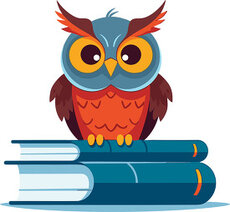Alaskan Malamute
|
|
| Alaskan Malamute | ||||||||||||||
|---|---|---|---|---|---|---|---|---|---|---|---|---|---|---|
| Country of origin | ||||||||||||||
| United States | ||||||||||||||
| Common nickname | ||||||||||||||
| Mal | ||||||||||||||
| Classification | ||||||||||||||
| ||||||||||||||
| Breed standards (external links) | ||||||||||||||
| FCI (http://www.google.com/search?q=cache:qg2Vj_42AdgJ:www.fci.be/uploaded_files/243gb99_en.doc+site:www.fci.be+%22243+/+09.+06.+1999%22&hl=en&ie=UTF-8), AKC (http://www.akc.org/breeds/alaskan_malamute/index.cfm), ANKC (http://www.ankc.aust.com/alaskan.html), CKC (http://www.canadasguidetodogs.com/malamute/malamutearticle1.htm) KC(UK) (http://www.the-kennel-club.org.uk/discoverdogs/working/w833.htm), NZKC (http://www.nzkc.org.nz/br602.html), UKC (http://www.ukcdogs.com/breeds/northernbreeds/alaskanmalamute.std.shtml) |
The Alaskan Malamute is a large northern dog breed originally developed for use as a sleddog.
| Contents |
Appearance
Their breed standard calls for a weight of 75 to 85 pounds (34-38.5 kg) and a height of 23 to 25 inches (58-63.5 cm) but much heavier individuals (120 to 140 pounds) are commonly seen. The coat is a dense double northern dog coat, somewhat harsher than that of the Siberian Husky. The usual colours are various shades of grey and white, sable and white, black and white, red and white, or pure white. The physical build of the Malamute is compact and heavy bone is called for.
Characteristics
Although still in use as sleddogs for recreational mushing, most Malamutes today are kept as family pets or show dogs. They are unable to compete successfully even in long-distance dogsled racing and their usefulness as sleddogs is limited to freighting.
Temperament
The Malamute temperament is friendly and affectionate by reputation, but they are known among dog drivers for their readiness to scrap with other dogs.
Health
Health issues in the Malamute are hip dysplasia, inherited polyneuropathy, and the usual northern-breed eye problems (particularly cataract and progressive retinal atrophy).
Their dense coats mean that Malamutes do not go well with hot weather. When the weather gets hot, they—even more than other dogs—need plenty of water and shade.
History
The Malamute is a descendant of dogs of the Mahlemiut tribe of upper western Alaska; native dogs were probably crossed with larger "white man's breeds" during the Gold Rush to increase their size for use as heavy freighting dogs. Recent DNA analysis confirms that this is one of the oldest breeds of dog.[1] (http://www.nytimes.com/2004/05/21/science/21dog.html?ex=1400472000&en=6b49c839cde80d81&ei=5007&partner=USERLAND).
At least four thousand years ago, but very likely even earlier, the Eskimos crossed the Bering Straits when the tribes migrated East from Siberia. Arctic anthropology indicates the presence of Eskimo civilization at Cape Krusenstern as early as 1850 B.C.
The history of the Alaskan Malamute is one where the bond between man and canine is most clear. The beginning of the Malamute breed has been traced to the Mahlemuts, an Inuit tribe of northwestern Alaska. The Mahlemuts cultivated and bred this dog for use in sledging supplies from seacoast to village, for hunting seals, and for protection against the polar bear. The Malamute has a double coat that protects it against wind, snow, ice, and 70-degree-below-zero temperatures. It is one of the oldest breeds of dog that is still true to its original size and use. Without these dogs, the Mahlemuts may not have survived the rigors of the Arctic. The Malamute dog has had a distinguished history; aiding Admiral Richard Byrd to the South Pole, and the miners who came to Alaska during the Gold Rush of 1896. This dog was never destined to be a racing sled dog; instead, it was used for heavy freighting, pulling thousands of pounds of supplies to villages and camps. It is a heavy-boned dog, with powerfully built, strong shoulders. When working, the Malamute shows a steady, balanced, tireless gait. It is not built for speed, but for heavy draft work.
Responsible breeders will want to preserve this heritage of the Malamute's working abilities. This dog is not necessarily a beauty queen; he is an intelligent, resourceful, hardworking animal with a major attitude. Originally bred to survive the rigors of the Arctic, he views the world in a singular manner. He has certain expectations of humans, and not everyone can measure up. He is friendly to his family members, and demands a lot of attention. Socialization of the Malamute is imperative. With the size of this dog, the strength and intelligence, he is very formidable. Malamutes do not normally bark. They tend to "talk" or how !
Eskimo means "raw flesh eater" in the language of the Canadian Indians, the Eskimos referred to themselves as "Innuit" which means "the people." Culturally they are quite different from the other races in the New World; their history is mysterious and much of this surrounds the dog. Thus its history and early development are largely conjectural.
Early life for the Eskimo consisted of nomadic travel in extremely rigorous conditions. Dogs and sleds were essential to their way of life and were their most prized possessions. Without them travel and hauling would have been impossible, The dogs also hunted polar bear and other Arctic mammals for food. They are extremely hardy dogs and have adapted to the extremely low temperatures commonplace in Alaska .
During World War II, many sled dogs, including many of the few registered Malamutes, were loaned for war duty. After the war many of these same dogs were used on an expedition to Antarctica. They served and then, due to some bureaucratic decision, were chained to an ice floe and destroyed by an explosive charge (this action nearly incited a mutiny among the Navy men involved).
Dog Pictures and Clipart
- Pictures of Dogs (http://classroomclipart.com/cgi-bin/kids/imageFolio.cgi?direct=Animals/Dogs)
- Dog Clipart (http://classroomclipart.com/cgi-bin/kids/imageFolio.cgi?direct=Clipart/Animals/Dog_Clipart)
Clipart and Animal Pictures
- Clipart (https://classroomclipart.com/image/category/clipart.htm)
- Animal Clipart (https://classroomclipart.com/image/category/animal-clipart.htm)
- Animal Animated Clipart (https://classroomclipart.com/clipart/Animations/Animals.htm)
- Pictures of Animals (https://classroomclipart.com/image/category/animal-photos.htm)
- Amphibian Clip Art, Pictures and Photogaphs (https://classroomclipart.com/image/category/amphibian-clipart.htm)
- Farm Animal Clip Art, Pictures and Photographs (https://classroomclipart.com/image/category/farm-animal-clipart.htm)
- Mammal Clip Art, Pictures and Photographs (https://classroomclipart.com/image/category/mammal-clipart.htm)
- Marine Animal Clip Art, Pictures and Photographs (https://classroomclipart.com/image/category/marine-life-clipart.htm)
- Reptile Clip Art, Pictures and Photographs (https://classroomclipart.com/image/category/reptile-clipart.htm)
- Spider Clip Art, Pictures and Photographs (https://classroomclipart.com/image/category/spider-clipart.htm)



